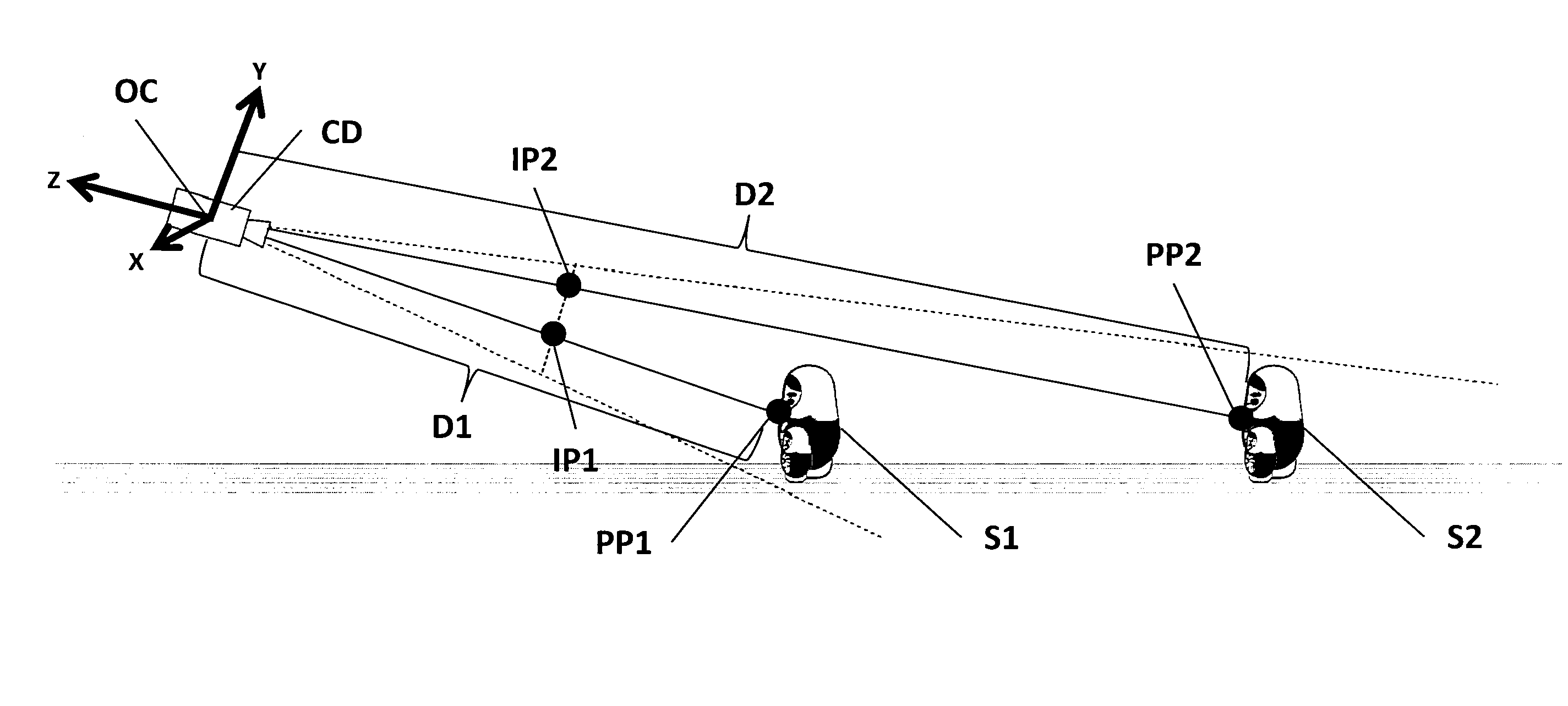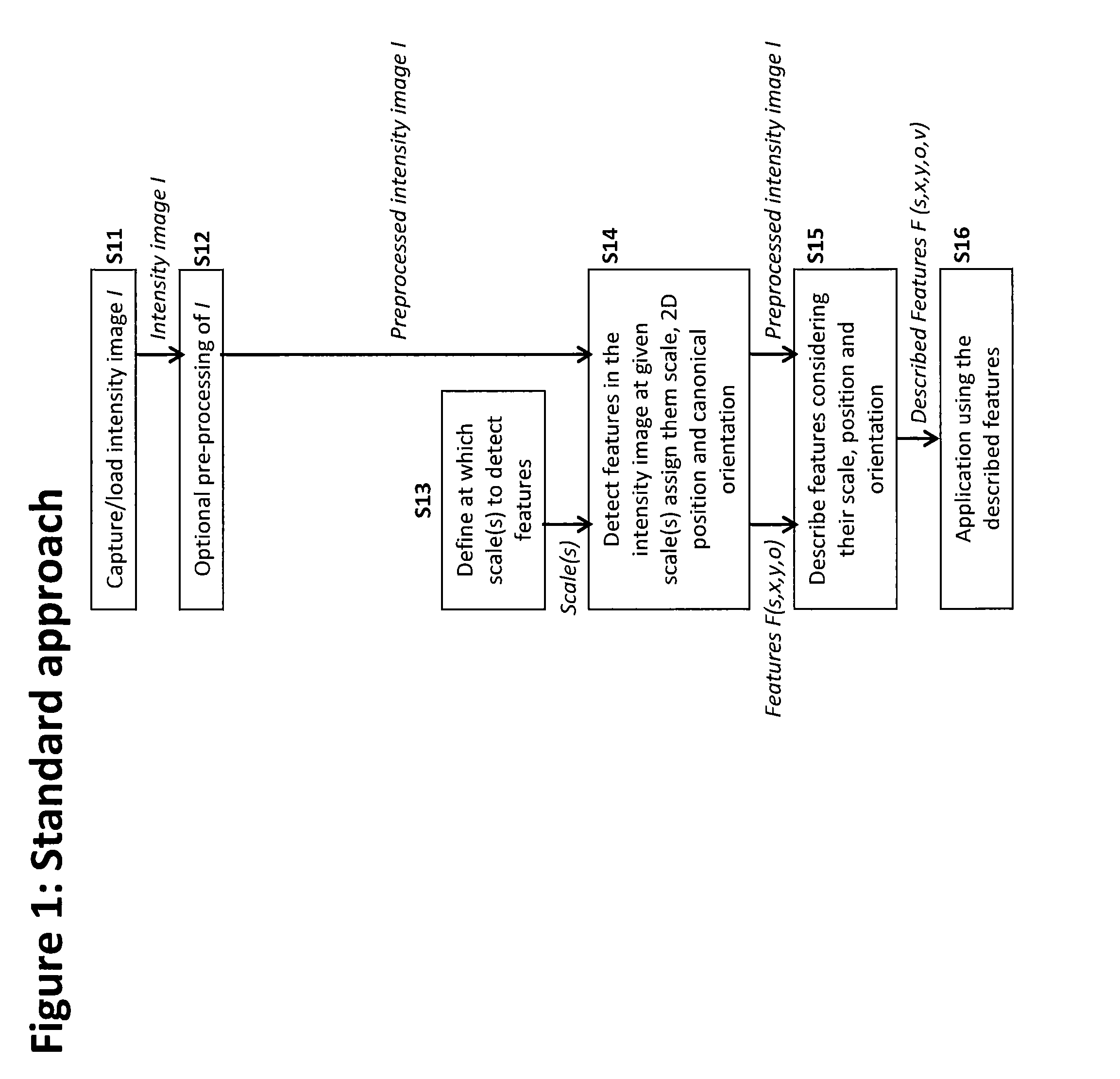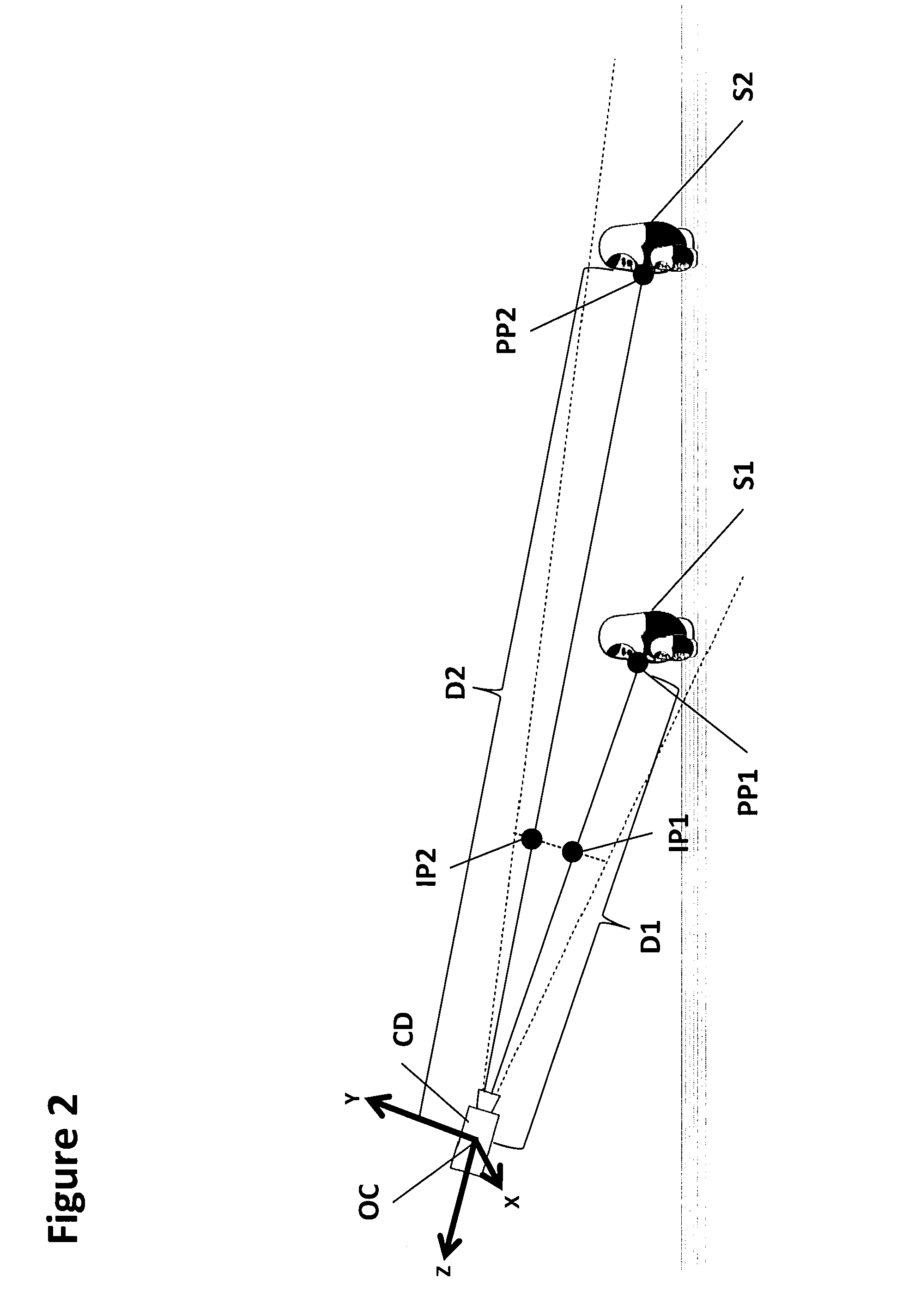Method of detecting and describing features from an intensity image
a technology of intensity image and feature, applied in the field of intensity image detection and description methods, can solve the problems of two-dimensional computer vision methods, operating in a projected space, and being unable to distinguish scale resulting from the distance of an object to the camera from scale resulting from the actual physical scale, so as to improve detection and/or description
- Summary
- Abstract
- Description
- Claims
- Application Information
AI Technical Summary
Benefits of technology
Problems solved by technology
Method used
Image
Examples
Embodiment Construction
[0051]The following description of aspects of the invention shall be understood by the skilled person as being only embodiments for explaining and illustrating principles and aspects of the invention without limiting the scope of the invention as defined in the appended claims.
[0052]1. Feature Detection at Real Scale According to a First Aspect of the Invention:
[0053]Generally, a method according to this aspect comprises the steps of providing an intensity image captured by a capturing device, providing a method for determining a depth of at least one element in the intensity image, in a feature detection process detecting at least one feature in the intensity image, wherein the feature detection is performed by processing image intensity information of the intensity image at a scale which depends on the depth of at least one element in the intensity image, and providing a feature descriptor of the at least one detected feature.
[0054]According to an embodiment, the feature descripto...
PUM
 Login to View More
Login to View More Abstract
Description
Claims
Application Information
 Login to View More
Login to View More - R&D
- Intellectual Property
- Life Sciences
- Materials
- Tech Scout
- Unparalleled Data Quality
- Higher Quality Content
- 60% Fewer Hallucinations
Browse by: Latest US Patents, China's latest patents, Technical Efficacy Thesaurus, Application Domain, Technology Topic, Popular Technical Reports.
© 2025 PatSnap. All rights reserved.Legal|Privacy policy|Modern Slavery Act Transparency Statement|Sitemap|About US| Contact US: help@patsnap.com



